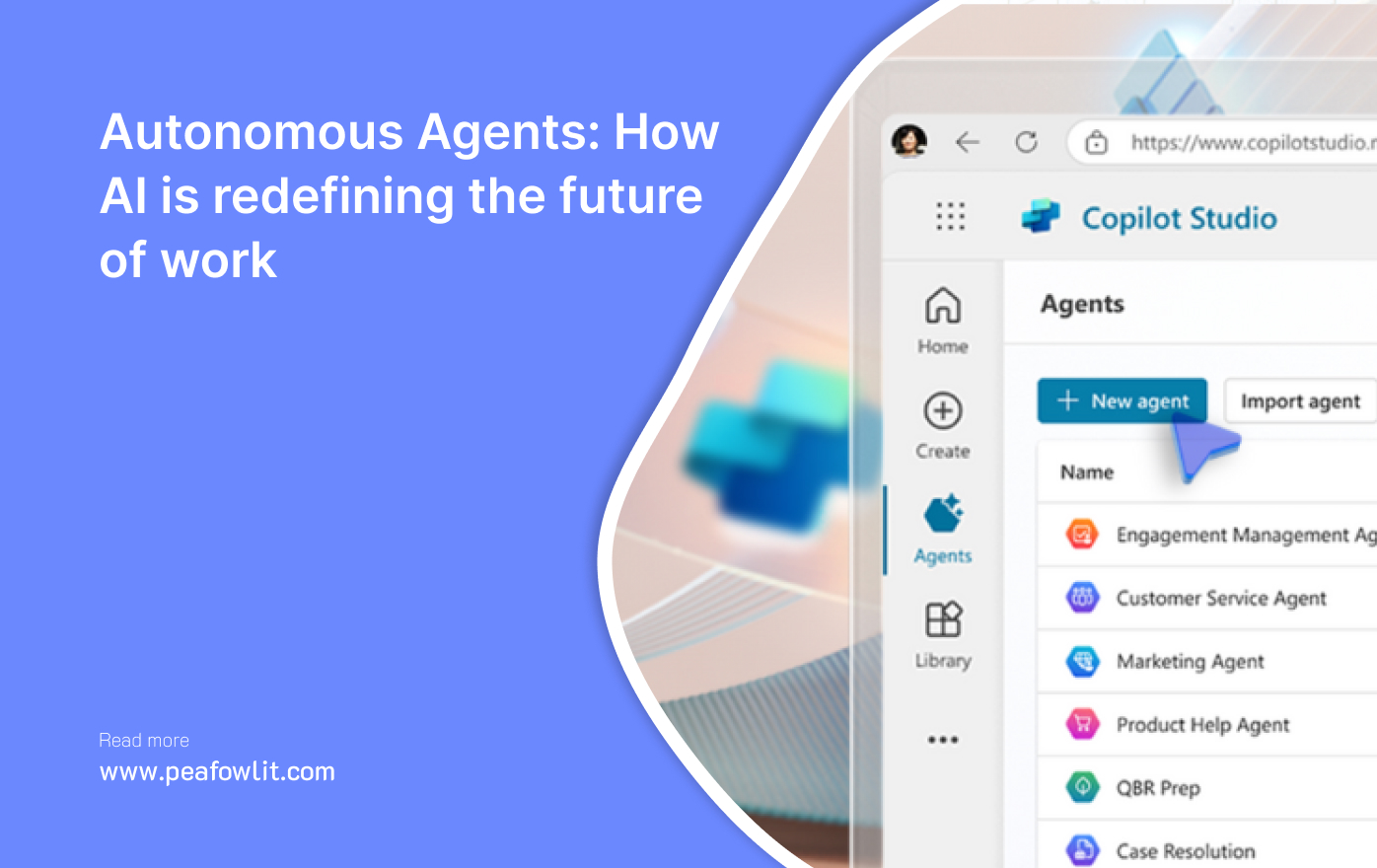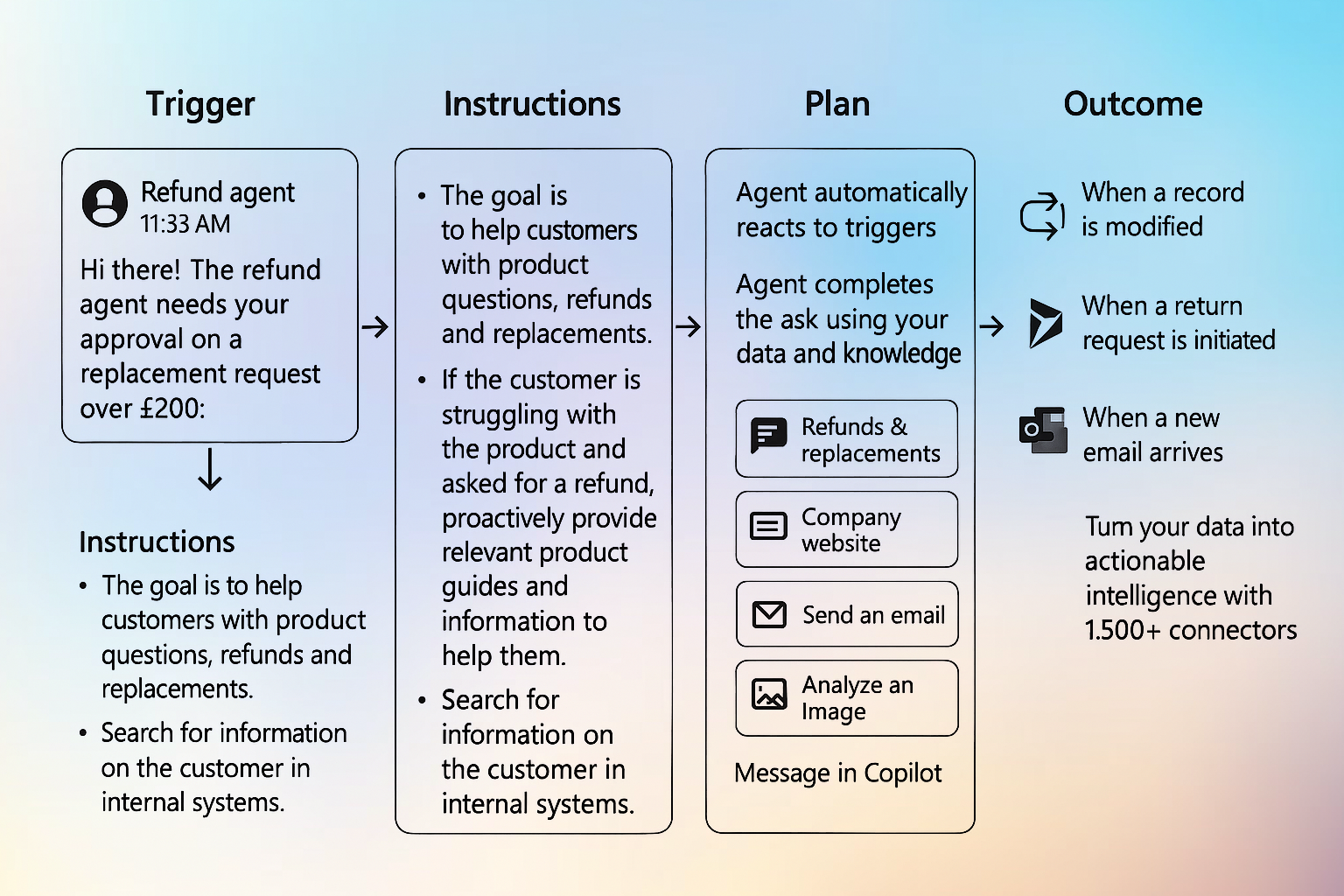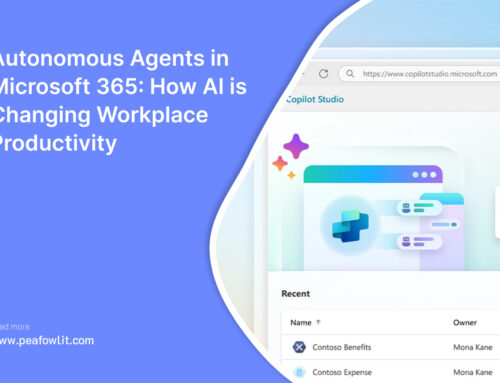
Introduction
The future of work is being reshaped by the rapid advancements in artificial intelligence (AI), with autonomous agents leading the charge. These intelligent systems, built in Copilot Studio, are designed to operate independently, making decisions and learning from their environment without human intervention. Autonomous agents are not just enhancing productivity; they are fundamentally transforming how businesses operate and compete.
What Are Autonomous Agents?
Autonomous agents are AI systems capable of performing tasks on their own. Unlike traditional AI, which requires explicit instructions, these agents can make decisions based on their programming and the data they gather. This independence allows them to adapt and respond to new situations effectively, making them invaluable in various industries.
Key Features of Autonomous Agents
- Independence: Autonomous agents can function without continuous human oversight, making decisions autonomously.
- Proactivity: They automatically respond to signals across your business and initiate tasks without human input.
- Adaptability: These agents can quickly plan, adapt to new information, and adjust their strategies on their own, finding workarounds when encountering roadblocks.
The Future of Work
The workplace is experiencing transformation due to the implementation of autonomous agents in regard to the following aspects:
Boosted Productivity
The work productivity of a firm is maximized since autonomous agents, in Copilot Studio, are capable of executing mundane repetitive tasks alone, therefore allowing human employees to partake in more strategic, higher-level functions. In addition to a boost in productivity, employees are also experiencing greater satisfaction as more engaging work is presented to them.
Improved Decision-Making
There is an ease of decision-making for companies with autonomous agents available. This is due to the capability of analyzing vast volumes of data and learning information from their surroundings. Autonomous agents autonomously use predefined rules, principles, and support to increase value and guide business intelligence systems and tools.
Scalability
Businesses are more prone to experiencing growth with autonomous agents present, but are also able to manage workloads with ultimate endurance. Autonomous agents are able to single-handedly scale operations with no immediate need for additional human power.
Cost Saving
With algorithmic governance present, companies are witnessing great savings in operational costs. Processes are optimized with routine tasks automated. These savings can and will be reinvested into different segments of the business to promote enhanced innovation and growth.
How Autonomous Agents Work: A Step-by-Step Example
To better understand how autonomous agents operate, let’s walk through a practical example using a refund agent in a customer service scenario. This example will highlight the key steps: Trigger, Instructions, Plan, and Outcome.
-
Trigger
The process begins with a trigger event. In this case, a customer requests a refund for a product they purchased.
-
Instructions
The agent receives a set of instructions to handle the refund request. These instructions might include:
- The goal is to assist customers with product questions, refunds, and replacements.
- If the customer is struggling with the product and asks for a refund, proactively provide relevant product guides and information to help them.
- Search for information on the customer in internal systems.
- For returns and replacements, perform a check on the product’s condition and purchase history.
-
Plan
Based on the instructions, the agent formulates a plan to address the customer’s request:
- The agent looks up and reviews the order details.
- It cross-references the order with commonly reported issues.
- The agent sends tailored troubleshooting guides to the customer to resolve the issue.
- If the customer still requests a refund, the agent initiates the refund process.
-
Outcome
The agent executes the plan and achieves the desired outcome:
- The customer receives the troubleshooting guides and attempts to resolve the issue.
- If the issue is resolved, the agent follows up to ensure customer satisfaction.
- If the customer still wants a refund, the agent processes the refund and updates the internal systems accordingly.
- The agent may also identify new support issues and triage them to other agents for further action.
This step-by-step process demonstrates how autonomous agents, in Copilot Studio, can efficiently manage complex tasks, ensuring a seamless and satisfactory experience for both the customer and the business.
Conclusion
The innovation of AI autonomous agents is one of the most exciting because their capabilities transcend different industries. The work of developing and perfecting these systems should proceed simultaneously with addressing safety, ethical, and trust challenges. Those issues will need to be confronted in order to fully assimilate autonomous agents into our daily life. Autonomous agents, built in Copilot Studio, are defining the future of work.










